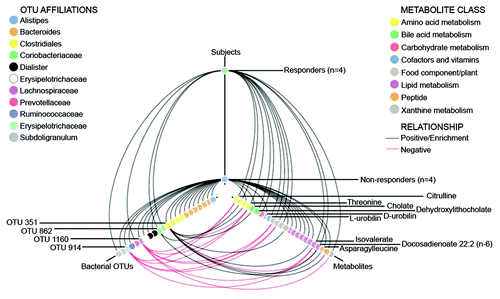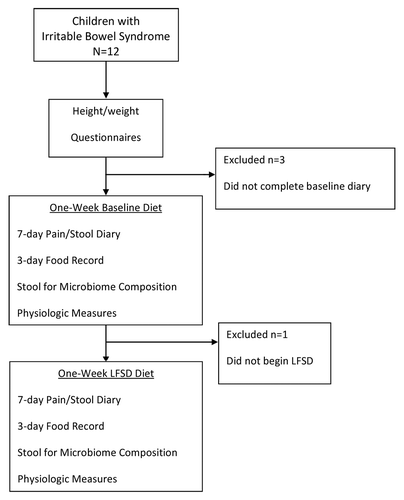Figures & data
Table 1. Pain characteristics and stooling frequency during baseline and low fermentable substrate diet (LFSD) periods
Figure 2. The gut microbiome (family-level) at baseline and during the low fermentable substrate diet by relative abundance. LFSD, low fermentable substrate diet.
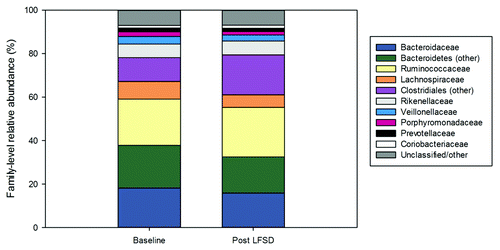
Figure 3. (A) LEfSe analysis differences of baseline microbial composition between responders and non-responders at the OTU level. Positive linear discriminant analysis (LDA) scores represent OTUs that were enriched in responders, while negative LDA scores indicate OTUs that were enriched in non-responders. (B) Microbiomes of children with IBS who are responders segregate from that of non-responders to a low fermentable substrate diet. A partial responder (reduction in pain frequency >30% but not 50%) is identified. (C) Responder vs. non-responder segregation is particularly seen when only comparing those with IBS with constipation (IBS-C) predominance.
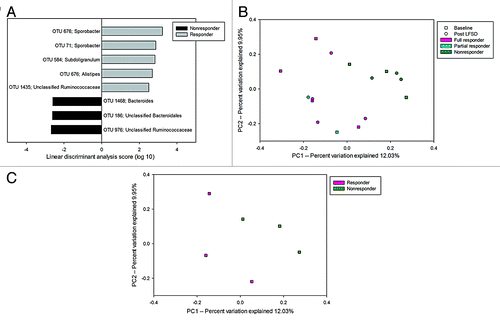
Figure 4. LEfSe analysis of differences in microbial composition during the low fermentable substrate diet between responders and non-responders at the OTU level. Positive linear discriminant analysis (LDA) scores represent OTUs that were enriched in responders, while negative LDA scores indicate OTUs that were enriched in non-responders.
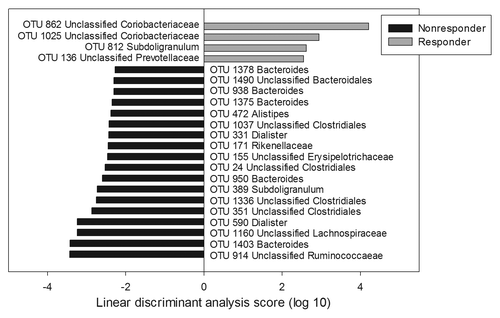
Figure 5. Hive plot showing tripartite associations among microbial taxa, metabolites, and clinical response following a low fermentable substrate dietary intervention. Responders were defined as those with a ≥50% decrease in abdominal pain frequency during the intervention. Red lines indicate a negative correlation (OTU vs. metabolite) or relative depletion (OTU or metabolite vs. subjects), while black lines indicate positive correlations or enrichment. OTUs and metabolites are color coded by taxonomic affiliation or metabolite class, and OTUs and metabolites of specific interest are highlighted with labels. Positive correlations are shown with respect to subject correlations though the inverse (negative correlation) is present in the other subject group (responders vs. non-responders).
